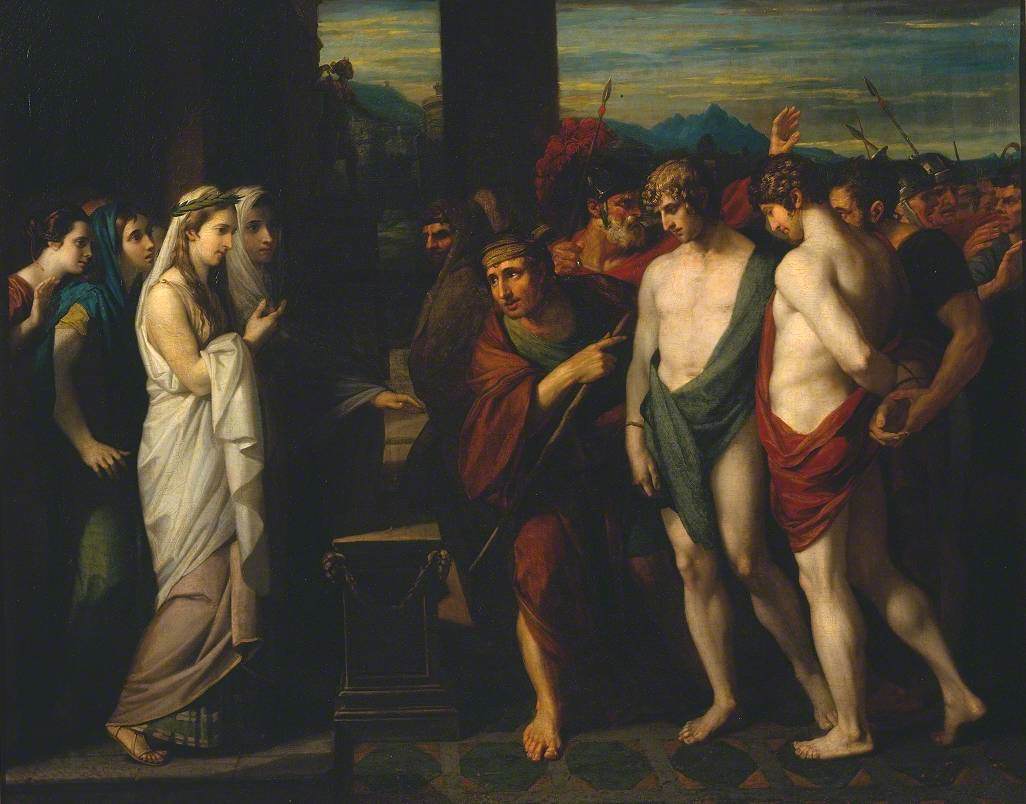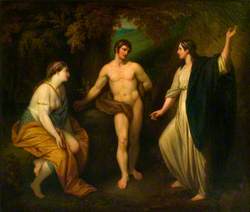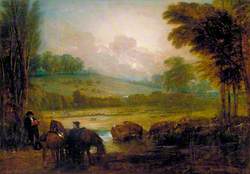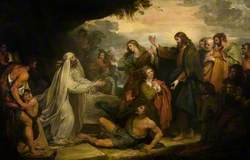How you can use this image
This image is available to be shared and re-used under the terms of the Creative Commons Attribution-NonCommercial-NoDerivatives licence (CC BY-NC-ND).
You can reproduce this image for non-commercial purposes and you are not able to change or modify it in any way.
Wherever you reproduce the image you must attribute the original creators (acknowledge the original artist(s) and the person/organisation that took the photograph of the work) and any other rights holders.
Review our guidance pages which explain how you can reuse images, how to credit an image and how to find more images in the public domain or with a Creative Commons licence available.
DownloadNotes
Add or edit a note on this artwork that only you can see. You can find notes again by going to the ‘Notes’ section of your account.
According to Sir George Beaumont (1753–1827), who presented the present picture to the National Gallery in 1826, the young American artist, Benjamin West, painted Pylades and Orestes 'immediately on his arrival in England', presumably in 1763, when he arrived from Italy (National Gallery, p.56). It was first shown at the annual exhibition of the Society of Artists, London, in 1766, with its companion 'The Continence of Scipio' (Cambridge, Fitzwilliam Museum). West's narrative is taken from the third act of a play by the classical author Euripides (480–406 BC) entitled 'Iphigenia in Taurus'. In the passage depicted by West, Iphigenia, a priestess of Diana, stands in judgement before the semi-naked figures of her brother Orestes (in the red drapery) and his cousin and companion, Pylades, who are brought before her, bound, by the shepherd (centre) who had previously reported their capture. Before Iphigenia, and separating her from the two men, is a low altar upon which the two men are to be sacrificed for their act of sacrilege. Beyond, at the entrance of the temple, is the gold statue of Diana that Orestes had been commanded by the oracle at Delphi to take back to Athens in reparation for the murder of his mother Clytemnestra, and which he had been attempting to seize when arrested.
The early history of the picture is interesting. Apparently it was greatly admired in West's studio, even before it was exhibited, although of the many wealthy collectors who came to inspect it, none offered to buy it. However, in 1766, the year of its exhibition, Alexander Geddes (1737–1802) purchased the picture from West for 100 guineas, although by 1776 it belonged to the engraver and dealer Gerard Vandergucht (1696–1776), in whose posthumous sale it appeared the following year. By 1802 West had reacquired the picture, selling it once more, this time to the influential collector Sir George Beaumont. In 1826 Beaumont presented it to the National Gallery, making it the first picture by West to enter a public art gallery. It remained in the National Gallery until 1929, when it was transferred to the Tate Gallery.
Further reading: Helmut von Erffa and Allen Staley, 'The Paintings of Benjamin West', New Haven and London, 1986, pp.260–261, no.186 'Noble and Patriotic. The Beaumont Gift 1828', exhibition catalogue, National Gallery, London 1988, p.56, no. 13, reproduced in colour Martin Postle September 2000
Title
Pylades and Orestes Brought as Victims before Iphigenia
Date
1766
Medium
Oil on canvas
Measurements
H 100.3 x W 126.4 cm
Accession number
N00126
Acquisition method
Presented by Sir George Beaumont Bt 1826
Work type
Painting
Inscription description
date inscribed








